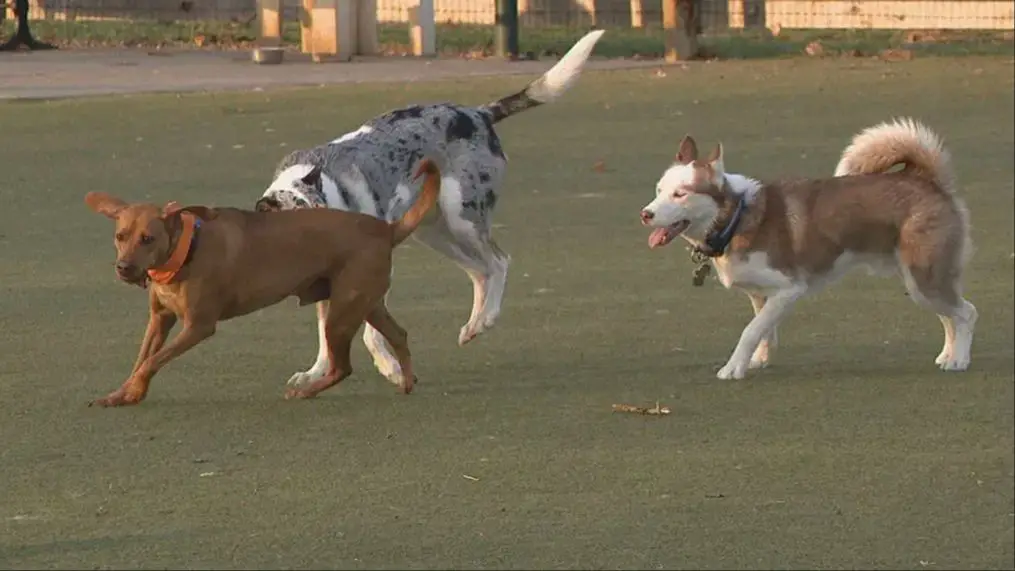Introduction
Dog fighting is a blood sport in which dogs are bred and trained to fight each other in a ring or pit for the purposes of gambling and entertainment. Though its origins are unclear, dog fighting likely began many centuries ago. In early 19th century England, dog fighting became a popular spectator activity, with rules and sanctioned arenas. Dog fighting spread to America along with European immigrants, where it continued mostly underground despite being banned in all 50 states today.
Though illegal and widely condemned, dog fighting still persists as an underground activity, particularly in inner cities and economically distressed rural areas. Reasons for its continued existence include illegal gambling profits, entertainment and thrill-seeking by spectators, perceived status and machismo for owners and trainers, and perpetuation of attitudes that pit bulls and other fighting breeds are dangerous or should be used only for dog fighting.
Legality
Dogfighting is illegal in all 50 states as well as the District of Columbia, Puerto Rico, and the Virgin Islands. It is a felony in all of these jurisdictions, punishable by prison time and monetary fines. The federal Animal Welfare Act, passed in 1976, also makes participation in dogfighting a felony offense under federal law. Penalties for violations range from fines to many years in prison, depending on the state and circumstances of the case. For example, the maximum penalty in Florida is 5 years and a $5,000 fine, while the maximum in California and Texas is 4 years with a $20,000 fine. Most states also classify dogfighting as a misdemeanor or felony for those who attend dogfights as spectators, as well as for possessing or selling animals for fighting purposes. The penalties for spectators are typically less severe than for dogfight operators or participants who enter dogs in the fight.
Geographic Prevalence
Dog fighting is most prevalent in urban areas and low-income communities across the United States. Major hubs include cities like Los Angeles, Atlanta, Newark, Cleveland, Chicago and Detroit. Many fights are associated with street gangs and illegal gambling. The Midwest and Southeast generally see higher rates than other regions.

Internationally, dog fighting is common in countries like Pakistan, Afghanistan, Mexico and parts of South America. Enthusiasts also exist in Russia, Ukraine, Japan, Italy and the Philippines. However, data on the global prevalence of dog fighting is limited. The activity remains illegal in most nations and is therefore difficult to track.
Participant Demographics
Data shows that dog fighting is most often associated with criminal groups and gangs in urban areas. Participants tend to be predominantly young men from lower socioeconomic backgrounds, often with criminal histories. However, dog fighting operations can sometimes involve a broader demographic that includes women, children, and both rural and middle-class participants.
Men are overwhelmingly the main handlers and organizers of fights, likely due to cultural norms and the underground nature of the activity. However, some female family members may be involved in caring for dogs or facilitating events. Minors are also sometimes exposed to dog fighting, often introduced through family or friends. This raises concerns about the normalization of cruelty.
While dog fighting may occur across socioeconomic groups, it tends to thrive among populations facing hardship, lack of opportunity, and a dearth of social services. Urban gangs in particular have been linked to using dog fighting for profit, status, and recruitment. Still, suburban and rural dog fighting can occur among youth and adults of varying income levels who train dogs as a hobby or side business.
Regarding spectators, attendance at dog fights may include a wide array of participants beyond those directly involved in handling or breeding dogs. Events can attract gambling and partying, drawing crowds seeking entertainment, socializing, and illegal earnings through the fights and betting.
Breeds
Certain breeds of dogs are more commonly used in dog fighting due to perceptions about their aggressiveness, strength, and pain tolerance. Some of the most commonly used breeds include:
- Pit bulls – Pit bulls and pit bull mixes, including the American Pit Bull Terrier, are among the most commonly used breeds. Their muscular build, strong bite, and reputation make them prized in dog fighting.
- Rottweilers – Rottweilers are large, powerful dogs originally bred as guard dogs. Their size and strength make them desirable for dog fighting.
- Doberman pinschers – Dobermans were originally bred as guard dogs and have a reputation as being tough, fearless, and aggressive. These traits lead some to choose them for dog fighting.
- Mastiffs – The mastiff breeds such as the Bullmastiff, Cane Corso, and Presa Canario are large, muscular dogs known for their strength. Criminals exploit these traits for dog fighting.
Other breeds used in dog fighting may include German shepherds, bulldogs, huskies, boxers, and Great Danes. Ultimately any breed may be used if it has the size, aggression, and pain tolerance desired in a fighting dog.
Training Methods
Many dogs used in illegal dog fighting are trained and conditioned from a young age to be aggressive. Different methods are used to instill violent and fighting behaviors that go against a dog’s normal tendencies.
One tactic involves chaining or tethering dogs outside to make them hypervigilant and territorial. Dogs kept isolated and chained in yards have been found at many dog fighting operations.
Operatives may also intentionally bait dogs to provoke and reward aggressive reactions. Dogs, especially puppies, may be agitated with sticks, tasers, or other painful stimuli so they learn to strike back when feeling threatened.
Some trainers may force dogs to run extensively or for long periods to build endurance and “gameness.” Heavy chains or weights are attached to dogs to strengthen muscles and increase power.
Dogs are often intentionally underfed or incited to compete for their food. This is thought to make them eager to fight for rewards in the pit. They may also be fed special high-protein diets to support muscle growth.
In addition, some dogs are given anabolic steroids to increase aggression and muscle mass beyond natural limits. This chemical alteration changes temperament and causes health problems.
Through this abusive conditioning, dogs are trained to become irrationally violent, even towards those trying to show affection. This goes against their innate social nature but allows them to “perform” in orchestrated fights.
Fight Operations

Dog fights are staged in secret underground locations to avoid detection. The fights usually take place in basements, garages, warehouses, barns, backyards of homes, or in remote outdoor areas not easily visible to the public.
Spectators, known as dogmen, gather for the fights. There is usually betting and gambling on the fights, with the purses for a single fight ranging from a few hundred to thousands of dollars. The dogmen handling the dogs will agree upon the purse and rules, such as whether there are weight classes.
The dogs, usually pit bulls, are often kept isolated and chained up prior to the fight. They are sometimes given performance enhancing drugs to increase aggression and stamina. Handlers will starve and beat the dogs before a fight to make them eager to attack.
During the fight, the dogs are placed in a pit or ring and expected to fight until one dog dies or is critically injured. Handlers watch closely and will use breaking sticks to pry the jaws of the dogs apart if the fight goes on too long without a winner. Even with referees present, the dogs often suffer severe blood loss and inflicted injuries.
Losing dogs that survive are often discarded, abandoned, or killed by their handlers. The dogs are seen as mere entertainment and money-making tools rather than living beings by those involved in dog fighting.
Injuries and Health Risks
Dog fighting often leads to severe injuries and health issues for the canine participants. Dogs used in fighting rings frequently suffer from lacerations, puncture wounds, broken bones, dislocated joints, dehydration, exhaustion and blood loss. These traumatic physical injuries require extensive emergency veterinary care and can leave dogs with lasting impairments or disabilities.

The violent nature of dogfights also takes a serious toll on the dogs’ psychological well-being. The cruelty involved leads many fighting dogs to develop aggressive tendencies, fear, distrust of humans and other abnormal behaviors. They may become hypervigilant and reactive due to trauma. Some dogs are emotionally scarred to the point that they can no longer safely interact with people or other animals. Rehabilitation of fighting dogs requires patience, expertise and compassion to help them recover.
In addition to visible injuries, fighting dogs are at high risk for contracting infectious diseases due to close contact with blood and bodily fluids. Diseases commonly transmitted during fights include rabies, hepatitis, distemper, parvovirus and heartworms. Kennel cough is also easily spread. Veterinary care protocols for fighting dog seizures must include testing and treatment for contagious diseases that endanger animal and human health.

The health and wellbeing of fighting dogs are severely impacted by their exploitation. Rehabilitation requires extensive medical treatment, behavior modification, enrichment and socialization. Some dogs rescued from fighting operations can recover with dedicated care, but many sustain permanent physical and emotional damage. Ultimately, preventing dog fighting protects dogs from unnecessary harm and suffering.
Efforts to Stop
There are various rescue, rehabilitation, and enforcement efforts focused on ending the cruel practice of dog fighting. Animal welfare groups work to rescue fighting dogs and rehabilitate them to become adoptable pets. Law enforcement agencies target organizers and spectators of dog fights with investigations and raids to arrest perpetrators and disrupt operations. Tougher legal penalties have been enacted in many places to further deter involvement. Public awareness campaigns aim to educate people on the inherent cruelty of dog fighting in hopes of reducing spectatorship and participation. Shelters screen potential adopters to prevent rescue dogs from being obtained for fighting purposes. Community-based programs provide intervention to at-risk youth to steer them away from dog fighting involvement. Many advocates believe a multi-faceted approach is needed, combining education, stronger enforcement, breeding restrictions, and fostering more humane values in order to eradicate dog fighting.
Conclusion
In summary, dog fighting still exists in many areas, although its popularity and prevalence varies geographically. Under reporting makes precise statistics difficult, but law enforcement and animal welfare groups still raid smaller local dog fights and break up major fight operations each year. While exact demographics are unknown, certain groups like young men in disadvantaged communities seem more likely to participate. Despite being banned in many parts of the world, dog fighting still remains a challenging form of animal cruelty to fully eliminate.
More education, outreach, and crackdowns are needed, especially in areas where dog fighting is more culturally ingrained or socially tolerated. However, through continued pressure by law enforcement and animal welfare advocates, as well as changing social attitudes, there is hope we can further curb this cruel practice over time.